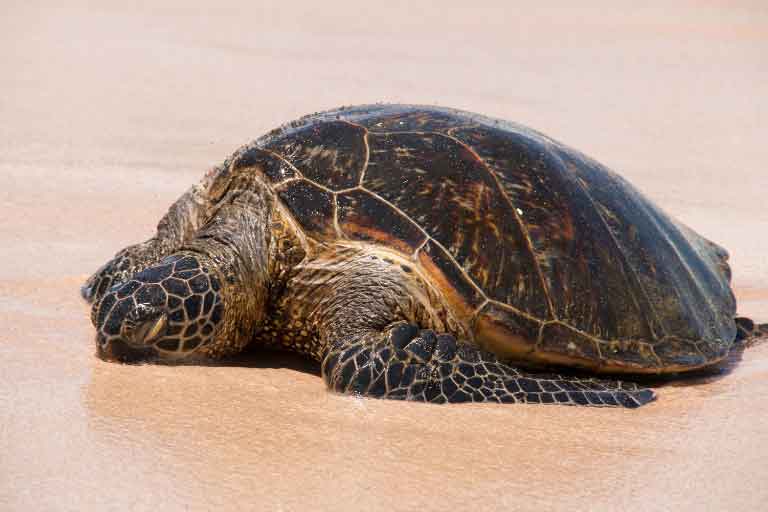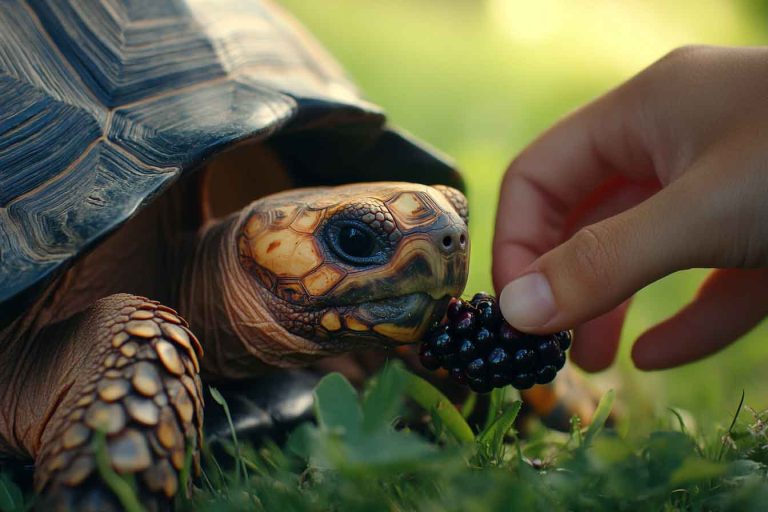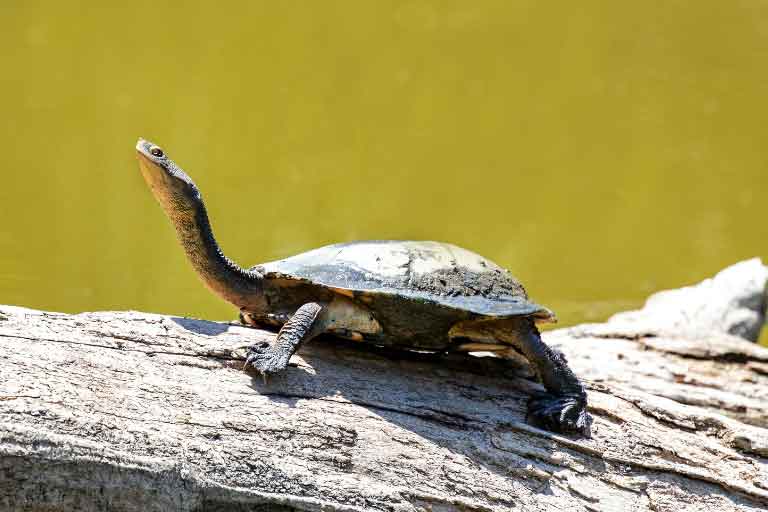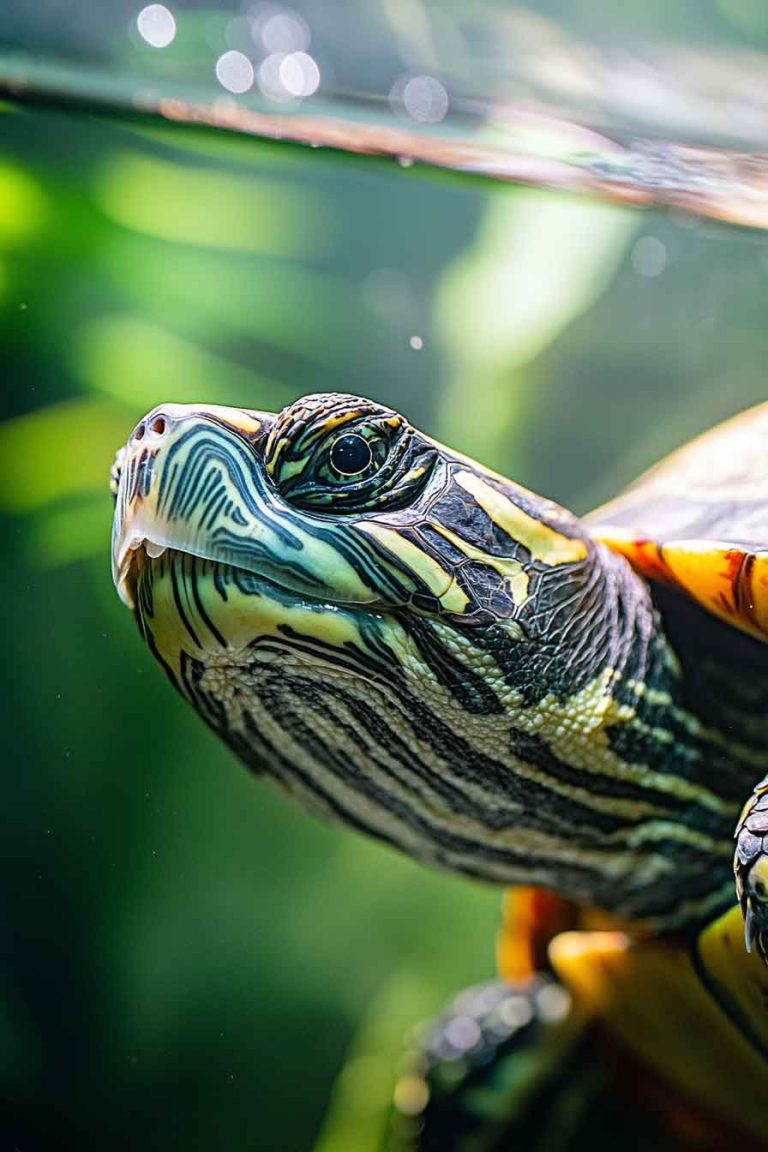Why Is My Turtle Sleeping So Much? How Much Is Too Much?
If you’re like me, you’ve probably noticed your little shelled friend spending a lot of time snoozing and wondered, “Is my turtle sleeping too much?” As a turtle owner, I’ve had those moments of concern when my pet seems to be in a constant state of nap mode. Turtles are fascinating creatures, but their sleeping…
If you’re like me, you’ve probably noticed your little shelled friend spending a lot of time snoozing and wondered, “Is my turtle sleeping too much?” As a turtle owner, I’ve had those moments of concern when my pet seems to be in a constant state of nap mode. Turtles are fascinating creatures, but their sleeping habits can sometimes feel like a mystery. In this blog post, I’m diving deep into why turtles sleep so much, what’s normal, and when you should start worrying. Let’s figure out if your turtle is just chilling or if something else is going on!
Why Do Turtles Sleep So Much?
Turtles, whether they’re aquatic, semi-aquatic, or terrestrial, have unique behaviors that can make them seem like the ultimate couch potatoes. From my experience with my own turtles, I’ve learned that their sleep patterns are influenced by a mix of biology, environment, and even their mood. Let’s break down the main reasons why your turtle might be catching more Z’s than usual.
Natural Behavior and Energy Conservation
Turtles are ectothermic, meaning they rely on their environment to regulate their body temperature. Unlike us, they don’t generate their own body heat, so they conserve energy by slowing down their metabolism when it’s cooler. I’ve noticed with my box turtle, Sheldon, that he loves to burrow and nap when the temperatures dip. This is perfectly normal! In the wild, turtles often rest for long periods to save energy, especially during cooler months or when food is scarce.
Brumation: The Turtle Version of Hibernation
One of the biggest reasons your turtle might seem to be sleeping excessively is brumation. I remember the first time I thought my red-eared slider, Bubbles, was sleeping way too much during the winter months. After some research and a chat with my vet, I learned about brumation—a state of dormancy similar to hibernation. During brumation, turtles slow their metabolism, eat less, and spend a lot of time resting or “sleeping.” This can last for weeks or even months, depending on the species and environment. If your turtle is in a cooler climate or a tank without consistent heat, brumation could be the culprit.
Environmental Factors
The environment you’ve set up for your turtle plays a huge role in their sleep patterns. I’ve found that if the tank’s temperature, lighting, or water quality isn’t quite right, my turtles tend to get sluggish. For example, if the basking area isn’t warm enough (ideally 85-90°F for most aquatic turtles), they might not feel like moving around much. Similarly, improper lighting can mess with their circadian rhythm, making them sleepier than usual. I always make sure my UVB light is on for 10-12 hours a day to mimic natural daylight and keep my turtles active.

How Much Sleep Is Normal for a Turtle?
So, how much sleep is too much? It’s a question I’ve asked myself plenty of times. From what I’ve observed with my turtles and learned from other turtle owners, “normal” sleep varies by species, age, and season. Here’s a quick rundown:
- Aquatic Turtles (e.g., Red-Eared Sliders, Painted Turtles): These guys love to bask during the day but often sleep in the water at night, sometimes floating or tucking themselves under a rock. They might sleep 6-8 hours at night and take short naps during the day. My slider, Bubbles, often dozes off while floating near the surface, which always looks super cozy!
- Box Turtles: Terrestrial turtles like box turtles tend to sleep more during cooler weather or when they’re brumating. Sheldon usually sleeps through the night and takes a few catnaps during the day, especially if he’s been exploring his enclosure.
- Tortoises: Tortoises, like my sulcata, Tortellini, are more active during the day but can sleep up to 12 hours at night, especially if they’re in a cooler environment.
If your turtle is active, eating well, and showing no signs of distress, their sleeping habits are probably just part of their quirky personality. But if they’re sleeping all the time and skipping meals or basking, it might be time to take a closer look.
When Should You Worry About Your Turtle Sleeping Too Much?
As a turtle parent, I know how easy it is to panic when your pet seems to be sleeping more than usual. I’ve had those moments where I wondered if Bubbles or Sheldon were okay or just being lazy. While turtles naturally sleep a lot, there are times when excessive sleep could signal something’s not quite right. Let’s dive into some red flags to watch for and what might be causing them.
Signs That Your Turtle’s Sleep Is Abnormal
If your turtle is sleeping so much that they’re barely moving, eating, or basking, it’s time to pay attention. Here are some signs I’ve learned to look out for based on my own experience:
- Lethargy Beyond Normal Rest: If your turtle is spending almost all their time sleeping or hiding and isn’t showing interest in their usual activities, like swimming or exploring, it could be a problem. For example, when Tortellini started hiding in his substrate for days without coming out to eat, I knew something was off.
- Loss of Appetite: Turtles love their food, so if yours is sleeping through meal times or ignoring their favorite treats, it’s a warning sign. Bubbles once went a few days without eating, and I realized it was because the water temperature was too low.
- Unusual Posture or Behavior: If your turtle is sleeping in strange positions, like floating lopsided in the water or not fully retracting into their shell, it could indicate stress or illness. I’ve seen Sheldon tuck his head in awkwardly when he wasn’t feeling well, which prompted a vet visit.
- Changes in Appearance: Look for physical signs like sunken eyes, a soft shell, or discoloration. These can accompany excessive sleep and point to health issues.
Common Causes of Excessive Sleep
If your turtle’s sleep seems excessive, there could be a few underlying issues. Here are the ones I’ve come across with my turtles or heard about from other turtle owners:
1. Incorrect Tank Conditions
I can’t stress enough how important the right environment is for your turtle’s health. If the water or basking area is too cold, your turtle might become sluggish and sleep more to conserve energy. I once forgot to check the heater in Bubbles’ tank, and the water dropped to 70°F—way too chilly for a red-eared slider! The ideal water temperature for most aquatic turtles is 75-80°F, with a basking spot around 85-90°F. For terrestrial turtles like box turtles, keep their enclosure between 70-80°F with a warmer basking area.
Lighting is another big factor. Without proper UVB light, turtles can’t produce vitamin D3 or absorb calcium properly, which can lead to lethargy. I make sure to replace my UVB bulbs every 6-12 months to keep my turtles healthy and active.
2. Illness or Infection
Turtles can get sick, just like us, and excessive sleep is often a symptom. Respiratory infections, shell rot, or parasitic infections can make your turtle tired and withdrawn. I had a scare with Sheldon when he started sleeping more and had some wheezing sounds. A vet diagnosed a mild respiratory infection, and with proper treatment, he was back to his curious self in no time. If you notice symptoms like bubbling at the nose, swollen eyes, or unusual spots on the shell, get your turtle to a vet ASAP.
3. Stress or Poor Diet
Turtles can get stressed from overcrowding, aggressive tank mates, or sudden changes in their environment. I learned this the hard way when I introduced a new turtle to Bubbles’ tank too quickly, and she started hiding and sleeping more. A poor diet can also cause lethargy. Feeding your turtle a balanced diet with veggies, protein, and calcium supplements is key. I always mix in some leafy greens and commercial turtle pellets to keep my crew healthy.
4. Brumation Gone Wrong
While brumation is normal, it can be risky if not managed properly. If your turtle is brumating but the conditions aren’t right (e.g., too cold or no access to water), they could become dehydrated or weak. I always check on my turtles during brumation to make sure they’re not losing too much weight or looking unwell.
What to Do If Your Turtle Is Sleeping Too Much
If you’ve noticed your turtle is sleeping more than usual and you’re worried, don’t panic! I’ve been there, staring at my turtles and wondering if I should rush them to the vet or just let them snooze. Based on my own experiences and some trial and error, here are some steps you can take to figure out what’s going on and help your turtle get back to their active, curious self.
1. Check the Tank Environment
The first thing I always do when one of my turtles seems off is check their tank setup. Grab a thermometer and make sure the water and basking temperatures are in the right range (75-80°F for water, 85-90°F for basking for most aquatic turtles; 70-80°F for terrestrial turtles). I also test the water quality for ammonia or pH imbalances, as poor water conditions can make turtles lethargic. For example, when Bubbles was sleeping too much, a quick water test showed the pH was off, and a water change perked her right up. Don’t forget to check your UVB light—make sure it’s working and hasn’t expired (most need replacing every 6-12 months).
2. Monitor Their Diet and Behavior
Take a close look at your turtle’s eating habits. Are they eating less or refusing food? I keep a little journal for my turtles to track when they eat and how active they are. If your turtle isn’t eating, try offering their favorite foods—Bubbles can’t resist shrimp, and it’s a great way to test her appetite. Also, watch how they move. If they’re sluggish even when awake or not basking as much, it could be a sign of an underlying issue.
3. Consult a Reptile Vet
If you’ve checked the environment and diet and your turtle is still sleeping excessively, it’s time to call in the pros. I learned this with Sheldon when his extra sleep turned out to be a respiratory infection. A reptile vet can do a thorough exam, run tests, and check for things like infections, parasites, or vitamin deficiencies. Bring along notes about your turtle’s behavior, tank setup, and diet—it really helps the vet figure out what’s going on. If you’re not sure where to find a reptile vet, check online or ask local pet stores for recommendations.
4. Manage Brumation Properly
If your turtle is brumating, make sure they’re in a safe environment. I always set up a quiet, cooler area for my turtles during brumation (around 50-60°F for most species), with access to water to prevent dehydration. Check on them weekly to ensure they’re not losing too much weight or showing signs of distress. If you’re not sure if your turtle is brumating or sick, a vet can help you tell the difference.
Tips to Keep Your Turtle Active and Healthy
To prevent excessive sleep and keep your turtle thriving, here are some tips I swear by:
- Maintain a Consistent Environment: Keep temperatures, lighting, and water quality stable. I use a timer for my UVB light to ensure 10-12 hours of “daylight” every day.
- Provide Enrichment: Turtles get bored! I add floating toys or rearrange rocks in Bubbles’ tank to keep her curious. For Sheldon, I scatter food in his enclosure to encourage foraging.
- Feed a Balanced Diet: Mix commercial pellets, fresh veggies, and occasional treats like worms or shrimp. I dust their food with calcium powder twice a week to keep their shells strong.
- Handle with Care: Avoid handling your turtle too much, as it can stress them out and make them retreat into sleep mode. When I need to move my turtles, I do it gently and from behind to avoid startling them.
FAQs
1. How Long Should My Turtle Sleep Each Day?
It depends on the species, but most turtles sleep 6-12 hours a day, including nighttime and short naps. Aquatic turtles like red-eared sliders might sleep 6-8 hours, while tortoises can sleep up to 12 hours, especially in cooler weather. If they’re sleeping much more and skipping meals, check their environment or consult a vet.
2. Is It Normal for My Turtle to Sleep During the Day?
Yes, turtles often take short naps during the day, especially after basking or eating. My box turtle, Sheldon, loves a mid-afternoon snooze in his substrate. But if they’re sleeping all day and not active at all, it might be a sign something’s wrong.
3. Can Stress Cause My Turtle to Sleep More?
Absolutely! Stress from overcrowding, loud noises, or sudden changes can make turtles hide and sleep more. I noticed Bubbles got sleepy when I moved her tank to a busier room. Keep their environment calm and stable to avoid stress.
Final Words
As a turtle owner, I know how worrying it can be when your shelled buddy seems to be sleeping all the time. But in most cases, it’s just their way of chilling out or adapting to their environment. By keeping their tank conditions just right, feeding them a balanced diet, and watching for signs of trouble, you can ensure your turtle stays healthy and active. If you’re ever in doubt, don’t hesitate to reach out to a vet—peace of mind is worth it! Keep an eye on your turtle, follow the tips I’ve shared, and you’ll have a happy, lively companion for years to come. Got any turtle sleep stories? Share them with me in the comments—I’d love to hear about your shelled friends!







